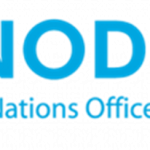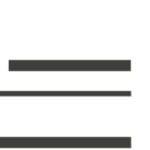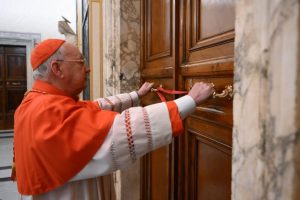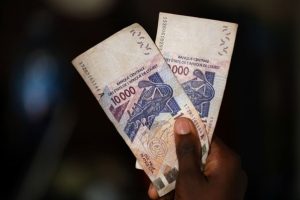One size does not fit all with the 100 successful coups that have peppered Africa’s post-independence history.

The toppling of King Farouk in 1952 by the Egyptian army marked the beginning of military intervention to gain political power in Africa. Since then, military interferences in politics have become a recurring feature to access political power, with 100 successful coups in 35 countries. Thus, despite growing concern about the recent increasing frequency of coups, the phenomenon is not new.

Three major dynamics have characterised coups in Africa. First is the uneven distribution of their frequency, with intermittent surges connected to the state of governance in individual states. Secondly, the causes of individual coups, their triggers, actors and eventual consequences vary significantly from one to the next. This has resulted in diverse domestic transitional dynamics and management approaches to addressing the impact of coups in countries.
Regional and continental responses to coups have differed significantly. For instance, the way the African Union managed the 2014 coup that unseated then-president Blaise Compaóre in Burkina Faso differed markedly from how the 2013 Egyptian event was approached. Similarly, the recent spate of coups is being managed case by case. The third feature is that each surge has usually resulted in a tightening of regional and continental responses that have often contained the trend until another wave emerges.
As Africa still reels from a third surge since 2019, recourse is being made to frameworks developed in response to previous waves. The three characteristics, however, raise the question of whether the nature and forms of coups have evolved from 1952 to the most recent occurrence in Gabon, which deposed the decades-long Bongo dynasty. It is also important to establish whether contemporary coups differ from earlier forms.
Seven decades of disruption

The occurrence of coups in Africa over the last seven decades has been related directly to the nature and evolution of politics and citizen responses. This is due to the primacy of politics in the emergence and perpetuation of the many variables that underlie grievances among citizens. Thus, the three major waves of post-independence coups have differing primary motivations, actor profiles and consequences, thereby defining the extent to which coups have evolved over time.
Quote: Post-independence coup waves have had differing primary motivations, actor profiles and consequences
The immediate post-independence political context generated the first coup wave between the 1960s and 1970s. This era saw the overthrow of post-independence liberation leaders whose political visions and ideological orientations conflicted with the interests of major colonial powers. This was compounded by the leaders’ failure to meet citizens’ economic and developmental aspirations. Given the intense superpower rivalry during the Cold War and the emergence of one-party states and dictatorships, a cocktail of issues informed the actions of senior military officers.
These coups were generally bloody and saw the death of 12 African leaders, extra-judicial killings and widespread human rights abuses, particularly in West Africa. Some coups were praised for truncating one-party statism and life-long presidencies. The first wave ultimately resulted in the first reordering of Africa’s post-independence political landscape.
Following the failure of 1980s African leaders, mostly military, to fulfil their promises, embrace democracy and meet citizens’ socio-economic needs, a new wave of coups emerged from 1990 to 2001. Although similar in motivation to the first wave, this was led largely by mid-level military officers who touted their escapades as addressing economic mismanagement.
This wave, however, accounted for only 14% of leader deaths and was characterised by a comparatively significant reduction in the level of human rights abuses associated with coups. Notwithstanding this, it presented a major threat to the security of tenure of many African leaders and threatened the democracy unfolding on the continent.
Consequently, regional and continental norms were tightened by the end of the decade, resulting in the Algiers decision on unconstitutional changes of government and the subsequent adoption of the 2000 Lomé Declaration. The former banned coup-makers from attending Organisation of African Unity summits, while the latter pronounced on unconstitutional changes of government (UCGs), defining a zero-tolerance policy against coups. The outcomes of these responses, coupled with the spread of democracy, significantly reduced coup numbers, ending the second wave.
The third wave
Since 2021, Africa has experienced a third wave of coups – in Sudan, Mali, Guinea, Burkina Faso, Niger and Gabon – with generally different characteristics from the coups of the previous decades. First, there has been a shift in the motivation for coups. Some have been over democratic backsliding concerns linked to the manipulation of national constitutions for term extensions, rigged electoral outcomes, deterioration of security and a rise in anti-colonial sentiment.
Quote: Coups have been linked to constitutional abuses, rigged elections and rising anti-colonial sentiment
The complexities of these issues and how they’ve manifested have differed across countries. The coup-makers in Niger, for instance, assert that they were motivated by ‘the continuous deterioration of the security situation and bad social and economic management’. In Guinea, the junta slammed Alpha Conde for ‘mismanagement, corruption and bad governance’. While some coups, particularly those in Guinea and Gabon, have been framed as attempts to restore democracy, the actual drivers and outcomes are more complex and varied.
Recent events in Guinea, Niger and Gabon have all been led by elite presidential guards rather than the army. This highlights the second feature of modern coups. This is due mostly to coups having occurred in francophone African countries where the army’s presidential guards protect the presidency. They are often more armed and better trained than the regular army.
It is easier for them to use their proximity to the presidency to take over power and then lobby for army involvement. In Niger, for example, expectations that the armed forces would quell the coup early faded when army chief of staff Abdou Sidikou Issa announced the army’s support for the ousting of then-president Mohamed Bazoum. This reflects a dangerous, simmering undercurrent of tensions originating from the politicisation of the army and nepotism within army ranks blamed on political elites.
Unlike previous waves, which were bloody and characterised by wanton human rights abuses (figure below), recent occurrences have been ‘smart coups’. They are largely bloodless, with fewer human rights abuses. The reduction in the number of officeholder deaths in the 1990s has continued.
Quote: PSC inconsistencies and selective application of norms in managing takeovers should be addressed
Coups after this era have not seen officeholder executions, signalling that recent coups were carried out with restraint. Deposed leaders have often been held by the junta for varied periods before release, under immense international scrutiny and demands. In Niger, the fear of what could happen to Bazoum limited the army’s role in quashing the coup, according to Sidikou Issa – the Nigerien army feared endangering the president’s life.

While the international dimension of previous coups was centred largely around the hidden hands of external powers, recent coups have had an undertone of anti-imperialist sentiment among citizens, mostly against France. In Mali, this resulted in the expulsion of French troops and similar agitations in Niger. Conversely, the use of foreign military elements – such as the Wagner Group – to secure the country has increased after coups in Mali and Burkina Faso, in particular, with similar expectations in Niger.
Coup-makers have also resisted the implementation of regional and continental norms against UCGs and, in Niger, have shunned engagements with the Economic Community of West African States (ECOWAS). Also important is the ‘coup alliance’ among Gabon, Niger and Burkina Faso based on solidarity and allegiance towards one another. In the case of Niger, Burkina Faso, Guinea, and Mali pledged support for the junta and threatened retaliation against proposed military intervention by ECOWAS.
While these dynamics distinguish contemporary coups from predecessors, the central role of political elites’ failure to meet citizen expectations and the governance deficit cannot be discounted as primary drivers. That fact establishes the similarities between past and present coups in that although they may have evolved, their central governance imperatives remain the fulcrum around which the evolution revolves. Thus, although the third wave defines coups of a different kind, they are essentially different shades of the same threat.
Implications for response
Given the evolving dynamics of coups in Africa and the features of recent occurrences, the Peace and Security Council (PSC) should advocate a comprehensive review of existing frameworks to counter UCGs. This is crucial to align responses with the changing dynamics of contemporary coups. First would be the Lomé Declaration and the African Charter on Democracy, Elections and Governance.
Dealing with the phenomenon, however, demands a multifaceted approach that effectively tackles the immediate challenges posed by coups and the underlying governance issues that contribute to them. The PSC’s inconsistencies and selective application of continental norms in managing coups should be addressed, as these may undermine the moral authority needed to respond to events.
Establishing the PSC sanctions committee should be prioritised as an important demonstration of political will against coups on the continent. This will also strengthen the African Union’s efforts to monitor suspended countries.
Source: https://issafrica.org/


















